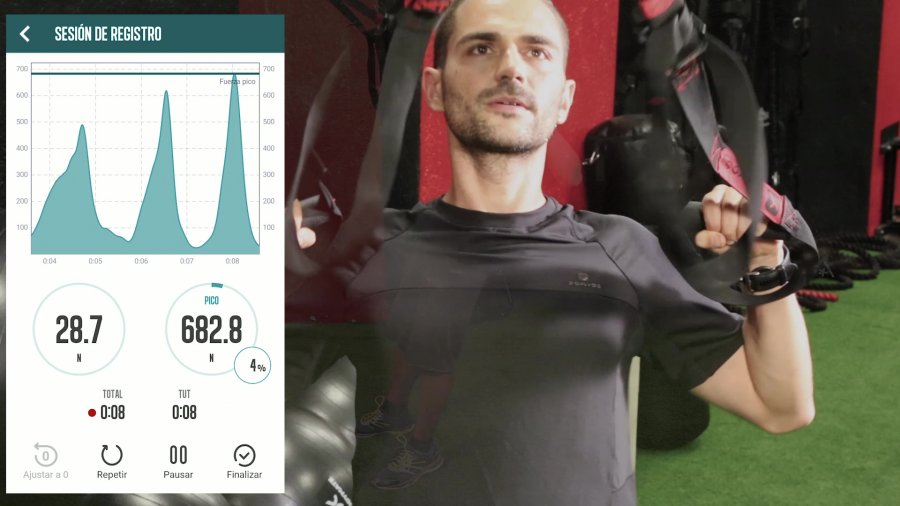How does the execution in velocity influence the force applied in a suspended inverted row exercise?
We monitor the force applied during a classic suspension training exercise with SUIFF PRO - the results will surprise you!

If you are a physical trainer, physical therapist or personal trainer, you will most likely use suspension training in the training or rehabilitation routines of your clients, patients or athletes.
We show you how you can monitor with SUIFF PRO how the level of traction force varies depending on the speed of execution in a classic exercise such as the reverse suspension row exercise.
The athlete performs 3 sets of 3 repetitions each, at 3 different execution speeds: low speed, medium speed and high speed.
The analysis of the force record with SUIFF PRO allows us to draw valuable conclusions:
- In static starting position with arms straight, the athlete is suspending a total of 28.5 kg of his body mass (280 N registered by the SUIFF PRO sensor), which would correspond to approximately 41% of his body weight.
- In static starting position with arms straight, the athlete is suspending a total of 28.5 kg of his body mass (280 N registered by the SUIFF PRO sensor), which would correspond to approximately 41% of his body weight.
-
In static starting position with arms straight, the athlete is suspending a total of 28.5 kg of his body mass (280 N registered by the SUIFF PRO sensor), which would correspond to approximately 41% of his body weight- The peak force clearly increases with increasing execution speed, due to the increased acceleration of the body.
-
However, the average force of the sets hardly changes, only a slight increase is observed with increasing execution speed, because the increase in inertia caused by the velocity of the body mass causes a further decrease in the level of tensile force during part of the push-up stroke.
-
Therefore, force management along the joint path during suspension training varies with the speed of execution of the movement.
This type of information can be of great help to fitness and rehabilitation professionals when programming aspects such as load and speed of execution in a given suspension training exercise.

